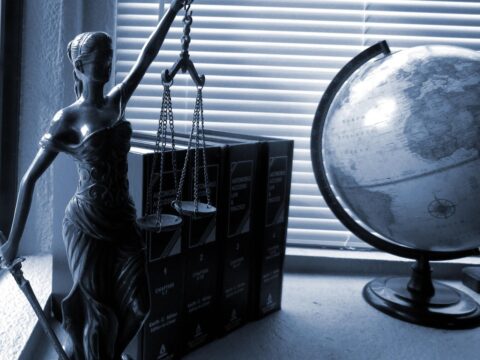Corporate Identity and Defamation in the Digital Age: Analyzing Google India Private Limited. v. Nayana Krishna, Karnataka High Court (2025)

Introduction
In an era dominated by digital communication and rapid dissemination of content, defamation law is increasingly intersecting with questions of intermediary liability and corporate identity. The recent decision by the Karnataka High Court in Google India Pvt. Ltd. v. Nayana Krishna1 serves as a crucial precedent for delineating the boundaries of civil liability in defamation suits involving multinational technology entities and their Indian subsidiaries.
Factual Matrix
The respondent, Nayana Krishna, filed a civil suit2 before the Additional City Civil and Sessions Judge, Bengaluru, seeking a permanent injunction against 21 defendants. The suit aimed to prevent the defendants from posting, broadcasting, or making derogatory statements, photos, or videos that allegedly harmed her reputation. Among the defendants was Google India Pvt. Ltd.
Challenging its inclusion, Google India filed an application under Order I Rule 10(2) read with Section 151 of the Civil Procedure Code, seeking deletion from the array of parties on the ground that there were no specific allegations of defamation against it, nor was there any material to show that it had engaged in any defamatory acts. This application was rejected by the trial court, prompting the petitioner to invoke the supervisory jurisdiction of the High Court under Article 227 of the Constitution.
Issues Before the High Court
The principal issues that emerged for consideration were:
1.Whether Google India Pvt. Ltd. was a necessary or proper party to the defamation suit.
2. Whether the plaint contained the requisite level of detail to establish a prima facie case of defamation.
3. Whether Google India’s corporate identity and operational functions justified its impleadment in a litigation concerning content hosted on platforms like YouTube and Google, both of which are operated by distinct foreign entities.
Scope of Defamation in the Case
The High Court took this opportunity to restate the essential legal ingredients required in any civil action against defamation. In such suits, it is imperative that the plaint clearly specifies the defamatory material, the context in which it was published, and the entity responsible for its dissemination. Generalized or vague assertions, absent of particulars, are insufficient to establish a cause of action. The Court emphasized that in cases involving digital platforms or online publications, this requirement becomes even more critical to avoid undue harassment of intermediary entities or unrelated parties.
Relying on the Supreme Court’s decision in M.J. Zakharia Sait v. T.M. Mohammed3, the Court reiterated that in a defamation action, the offending words or material must be set out explicitly in the plaint. Where the alleged defamation is not apparent in the face of the statement, the context (colloquium) and innuendo must also be pleaded. In the present case, the plaint did not contain any direct reference to content published, hosted, or posted by Google India. There was no specific statement, image, or video attributed to the company, and no material evidence was annexed to support the claim that it was responsible for the allegedly defamatory publications.
Corporate Distinction and Intermediary Role
The Court paid careful attention to the corporate structure of Google and its subsidiaries. It noted that Google India Pvt. Ltd. is a separate legal entity, registered under the Companies Act, 1956, with its registered office in Bengaluru. It is a wholly owned subsidiary of Google LLC; a company incorporated under the laws of the United States. The petitioner’s role is limited to acting as a non-exclusive reseller of online advertising services in India and providing technical support services, which have no bearing on the suit’s subject matter.
The Court held that the assumption that Google India and Google LLC are the same entity, without any evidence or legal basis, is flawed. It observed that the petitioner cannot be held liable merely because it shares a brand name with the global parent company. The Court drew attention to other similar cases where trial courts themselves had recognized the distinction and had deleted Google India from suits involving online content hosted on platforms like YouTube or Google.com. It referenced decisions from the Bombay High Court and various Bengaluru civil courts that similarly rejected such joinder of parties in the absence of direct involvement.
Judgment
After a thorough analysis of the pleadings, corporate relationships, and applicable legal standards, the Karnataka High Court allowed the writ petition. The impugned order passed by the trial court on 11.02.2019 was set aside. The High Court held that Google India Pvt. Ltd. had been improperly arrayed as a party to the defamation suit4, as there were no specific allegations or materials presented against it that could justify its inclusion. The Court held that in the absence of any defamatory content linked directly to Google India, the proceedings against it amounted to an abuse of process. Consequently, the application under Order I Rule 10(2) CPC was allowed, and Google India was ordered to be deleted from the array of defendants in the pending civil suit. The Court did not pass any order as to costs.
Legal Implications
This decision has substantial implications for the law of defamation in the context of digital platforms and intermediary liability. Firstly, it reinforces the fundamental rule that specific and detailed pleadings are necessary to sustain a cause of action in defamation. It is not sufficient to rely on vague or sweeping claims, particularly when dealing with large corporate entities with complex global structures. Secondly, the judgment underscores the importance of recognizing the distinct legal identities of domestic subsidiaries vis-a-vis their foreign parent companies. In doing so, it shields Indian subsidiaries from being subjected to legal proceedings merely due to their association with a parent entity, unless there is direct involvement or complicity established through proper pleading and evidence.
Further, the judgment aligns with global trends aimed at protecting intermediary platforms and their subsidiaries from unwarranted litigation, unless their role in the allegedly unlawful act is clearly substantiated. It upholds the principle that intermediary liability must be governed by statutory frameworks, such as the Information Technology Act, 2000, and not by assumptions of brand identity or corporate affiliation. This case, therefore, serves as an important benchmark in the ongoing evolution of digital defamation law and the limits of civil liability for internet-based services and their regional arms.
Conclusion
The Karnataka High Court’s decision in Google India Pvt. Ltd. v. Nayana Krishna is a ruling that draws a clear line between corporate identity and legal liability, especially in defamation suits arising out of digital content. It reaffirms the sanctity of due process and the necessity for precision in pleadings, while also offering much-needed protection to intermediary platforms and their affiliates. As courts across India grapple with increasing litigation involving online defamation and content regulation, this judgment offers both clarity and caution for litigants and practitioners alike.
For more details, write to us at: contact@indialaw.in
By entering the email address you agree to our Privacy Policy.



